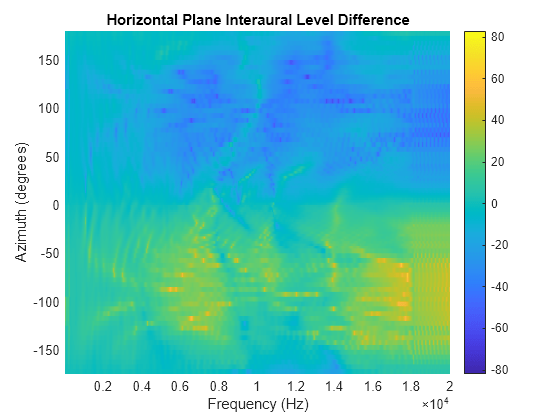interauralLevelDifference
Syntax
Description
ild = interauralLevelDifference(s,Name=Value)
interauralLevelDifference(___) with no output arguments
plots the interaural level difference.
Examples
Input Arguments
Name-Value Arguments
Output Arguments
More About
References
[1] Lee, Gyeong-Tae, Sang-Min Choi, Byeong-Yun Ko, and Yong-Hwa Park. "HRTF measurement for accurate sound localization cues." arXiv preprint arXiv:2203.03166 (2022).
Version History
Introduced in R2024a
See Also
sofaread | findMeasurements | plotGeometry | freqz | impz | spectrum | interauralTimeDifference | directivity | energyTimeCurve
